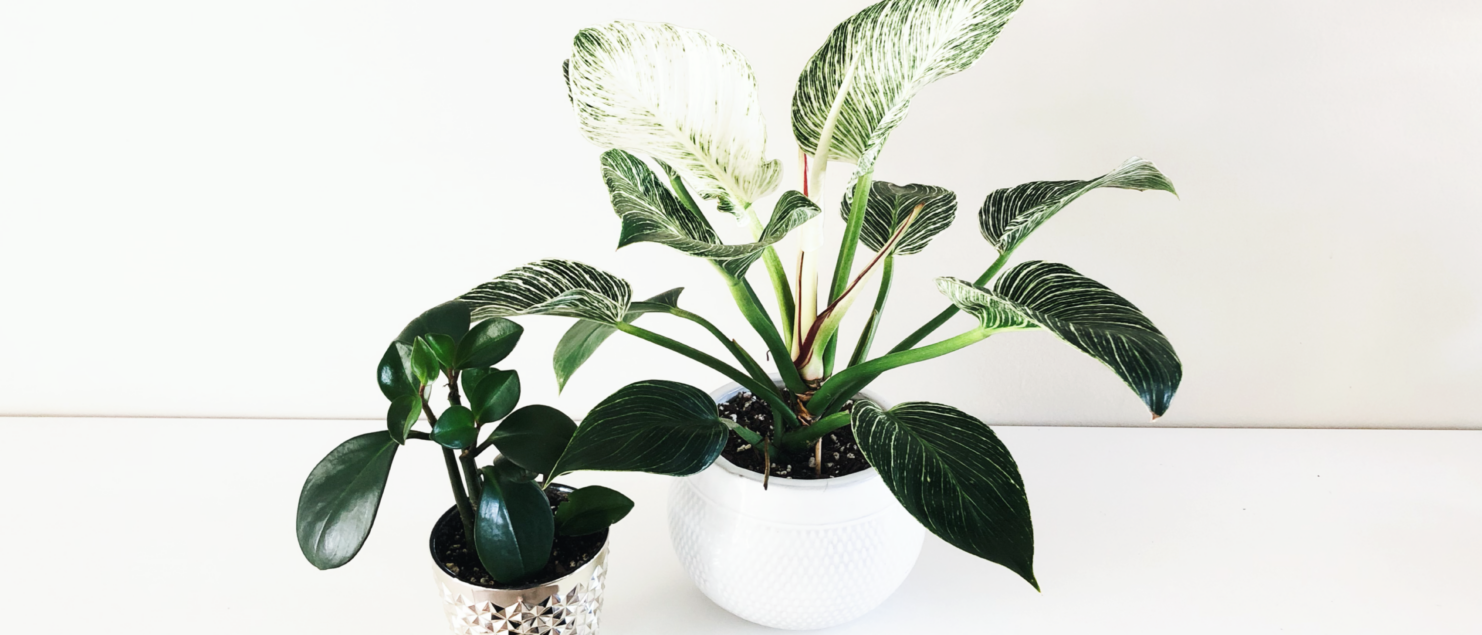Common Environmental Problems For Houseplants
There are many hurdles you’ll face when growing plants indoors.
It seems that plants will grow out beautifully outside in nature with absolutely no care and love from you.
That’s because houseplants haven’t become adapt to our home environments. We’re essentially plucking them from their homes and putting them in ours, which can be drastically different.

Even if we mock the plants natural environment as much as we possibly can, it still might not be enough. Plants need to adapt by getting used to their environment which for some plants can be a difficult task.
Environimental problems happen to anyone who grows indoors. I’m going to go over the most common environmental problems in houseplants and how you can fix them, for happier and healthier houseplants!
Spindly/Leggy Houseplants

When growing indoors, homes don’t have the same amount of light as it does outside. Seems like a no brainer, right?
The reasons are simple – we have walls, doors, roofs etc. that all contribute to light blockage. Even some windows can have an amount of tint to block out some lighting.
Plants that need lots of sunlight may start to get thinner and longer stems, which might have wider spaces between leaves. Making them look “leggy”.
Even plants that require low amounts of sun might get this way if the plant is too far away from a light source.
“Even low light plants still need a certain amount of lighting.”
Houseplants that do this need to be moved to a better lit spot. These houseplants become distorted due to them reaching for light, while also not getting enough nutrients from the light, which is what causes the stems to become skinnier.
How To Fix?
Simple solution for this common environmental problem is to move the plant closer to light. Either sunnier spot in your home or under grow lights. Check out my complete grow light guide here.
Do, note that even if you move the plant, it won’t go back to its original form unless you propagate it and re-plant it, basically starting over (if the plant allows for it).
Wrinkly leaves

This environmental problem was a big issue for some of my Philodendrons, and I found that this is a common problem in this plant type.
I couldn’t figure out why some of my Philodendrons were producing new leaves that almost look lumpy and wrinkled. This also caused the leave to never fully unfurl on its own.
There are a number of reasons why your houseplant may be doing this. Humidity is one of the biggest culprits of this issue. Lower humidity can dry out the leaves and not give the plants that slip it needs to unfurl the leaf, causing it to crinkle.
Another reason for this is infrequent watering or inconsistent watering. If a leaf is unfurling and it starts to dry out, the leaf might not be able to come out and gets stuck in the stem.
This is pretty similar to a humidity issue so make sure you check your watering and keep on some sort of schedule to find out if this is the issue other than humidity.
How To Fix?
Check the plants soil moisture. If the soil seems dry, give it a little drink. Make sure you keep a routine in checking on your plants at least once a week to make sure they are doing ok.
If watering isn’t a problem, them humidity is an issue. Make sure you bump up the humidity with a humidifier or even a pebble tray.
You can also check out my blog here, where I list out the best ways to bump up your humidity levels.
Small leaves

Growing a houseplant that all of a sudden started popping out tiny leaves?
Check your soil/roots.
Anytime your plant starts to have a growth stunt, you have to get down to the root of the issue.
See what I did there?
Houseplants that are in a sunny spot can often dry out faster than in the shade and vise versa. This can be due to the plant sitting in soil that’s either too wet or too dry for a long period of time.
The plant might have just enough energy to pop out a tiny leaf here and there, but it’s a cry for help.
How To Fix?
If the soil is too wet, you might need to re-pot with fresh soil, and make sure you check for root rot.
If the soil is too dry, you will need to give it a good watering. Make sure you water until it starts to come out of the drainage holes.
The smaller leaves might get bigger, or might not. But once the issue is resolved, your houseplant should go back to normal(ish).
Weak growth

These are houseplants that look pretty ok from a distance, but once you touch it or move it – bye bye leaves.
It’s like the Charlie Brown Christmas tree – every time Charlie moves the tree more needles fall off it.
This is caused by inadequate light. Not only can your houseplants become leggy and stretched due to poor lighting, they can become fragile.
Plants that have become so weak that they can hold onto their leaves can be saved, but once the leaves fall off theres no putting them back on. You can try to propagate the leaves, if it’s that kind of plant.
How To Fix?
Moving the plant to a brighter area will help the plant produce better growth. Also giving the plant a bit of fertilizer (depending on the season) can give it a little boost coupled with better lighting.
Mi Casa Es Su Casa
Trying to mimic your houseplants natural environment as best as you can in your home is going to be so beneficial to the plant.
We all love our houseplants and want the best for them.
Just know the most common environmental problems in houseplants are inevitable. But once you can figure out what is going on, it’s usually super treatable.
Which one of these common environmental problems in houseplants have you experienced?

